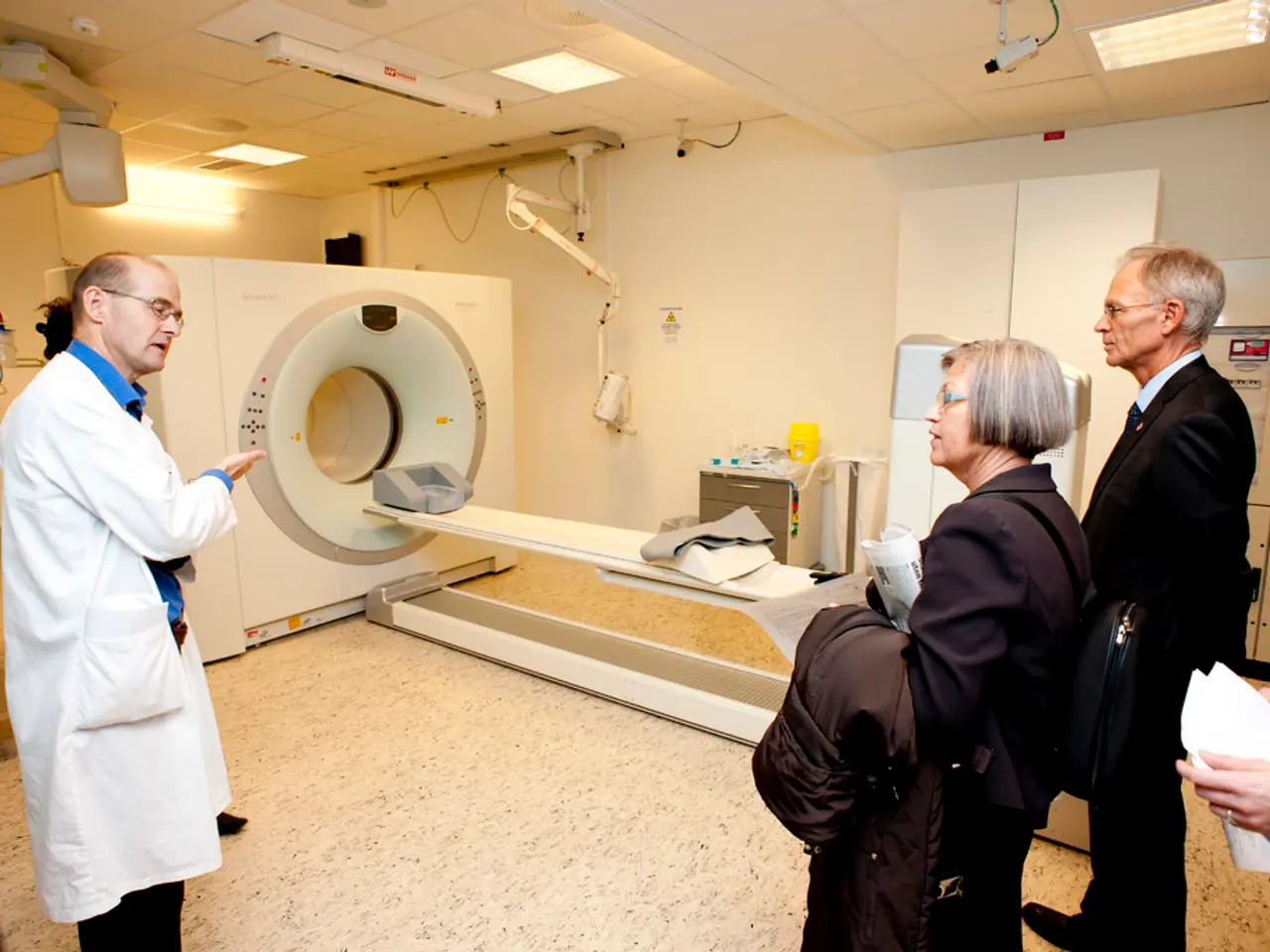Determining Emphysema: Approaches Utilized by Medical Professionals
Emphysema, a severe respiratory disease that damages the air sacs and walls of the lungs, is primarily diagnosed through a combination of pulmonary function tests (PFTs), imaging studies, and clinical evaluation.
The most common lung function test used for COPD diagnosis, including emphysema, is spirometry. This non-invasive test involves inhaling deeply and exhaling as much air as possible into a device that measures how quickly and how much air is expelled from the lungs. The results help the doctor determine how severe the COPD is, check how well the lungs are working, and make treatment recommendations.
Pulmonary Function Tests (PFTs) are crucial in assessing airflow obstruction and lung capacity. Spirometry, the key test here, measures the amount of air exhaled and the speed of exhalation, which helps identify airflow limitation characteristic of emphysema and COPD.
Doctors often diagnose emphysema without using routine laboratory tests or imaging studies. However, in specific cases, laboratory tests such as blood tests may be ordered. While these cannot confirm emphysema or COPD, they can provide valuable information about the disease's impact on oxygenation.
Chest imaging plays a significant role in the diagnostic process. Computed Tomography (CT) scans are preferred for detecting and quantifying emphysema. They provide detailed images showing the presence, pattern, and extent of lung tissue damage, as well as airway wall thickening. Quantitative CT analysis can further distinguish emphysema from other COPD forms.
Chest X-rays may be used initially to rule out other causes of symptoms like shortness of breath but are less sensitive than CT scans. In severe cases of emphysema, a chest X-ray may show flattening of the diaphragm due to hyperinflation of the lungs, as well as a heart that appears elongated and tubular in shape.
A thorough medical history is also an essential part of the diagnostic process. Doctors will ask questions about the type and duration of cough, whether there is lots of phlegm or mucus, whether specific activities cause breathlessness, how the symptoms impact daily life, family history of lung disease, personal history of chest problems, allergies, infections, smoking, exposure to irritants or toxins, other medical conditions, and regular medications.
Incorporating multidimensional criteria involving spirometry-confirmed airflow obstruction plus CT imaging findings and symptoms can improve the accuracy and identify patients at risk of poorer outcomes. Machine learning models applied to quantitative CT features are advancing the diagnostic capability by improving differentiation between emphysema and emphysema-dominant COPD.
In summary, emphysema diagnosis is typically confirmed by spirometry-based PFTs combined with CT imaging findings and clinical assessment of symptoms and risk factors. A physical exam, including listening to the lungs using a stethoscope and percussion, or tapping on the chest, may also be performed to check how well the lungs and heart are functioning.
- The results from spirometry, a common lung function test used for COPD diagnosis, help doctors determine the severity of COPD, check lung functioning, and make treatment recommendations.
- Doctors might diagnose emphysema by relying on a patient's medical history, inquiring about symptoms like cough, phlegm production, and impact on daily life.
- A routine part of the diagnostic process for emphysema is the use of CT scans, which provide detailed images of lung tissue damage, airway wall thickening, and can help distinguish emphysema from other COPD forms.
- Incorporating multiple diagnostic criteria, such as spirometry-confirmed airflow obstruction, CT imaging findings, and symptoms, can enhance the accuracy of identifying patients at risk of poorer outcomes in emphysema cases.
- Machine learning models that analyze quantitative CT features are being developed to improve the diagnostic capability and better distinguish emphysema from emphysema-dominant COPD, demonstrating science's ongoing commitment to addressing chronic diseases like emphysema and other respiratory conditions.




